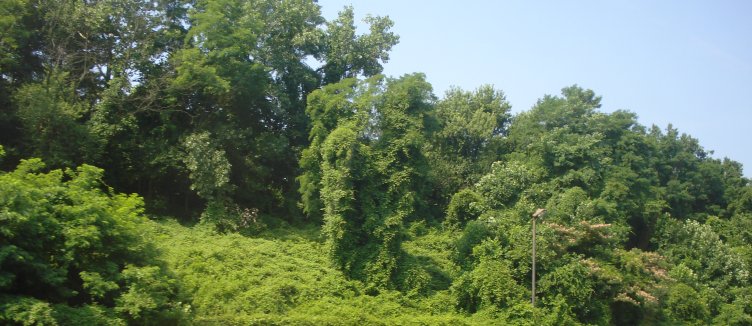
It looks like vines are going to take over the world. I am fighting vines on the tree farm. The recent thinning and biosolids fertilization on the Chrissie’s pond tracts has benefited them as much as the trees. I am not sure of all the kinds, but I have at least oriental bittersweet, wisteria, trumpet vine, Virginia creepers, Japanese honeysuckle and wild grape. (I don’t have kudzo and I am thankful for that.) Each presents different challenges.
The oriental bittersweet is the worst, although not the most pervasive. It is destructive because it winds around the truck and branches of the trees. It deforms them and I think it would kill them in time. The trumpet vines are very pretty, but they overtop the little trees. Virginia creepers are just heavy. They cover trees and weigh them down but are not very hard to control if you keep at it. Wild grape is like that too. All vines are vulnerable to controlled fire and I look forward using this tool to taking care of the vines, along with some of the ticks, next year.
Until then, I am doing the holding action. Yesterday I tramped through the brush and physically cut down the clinging vines. I also trimmed off some of the lower branches of the pine trees. It makes it easier to see what you are doing and besides the lower branches act as ladders for the vines. I must have done this for more than 1000 trees. Of course, there are 500+ trees per acre and +/- 110 acres of pine on CP, so it is a little like peeing in the ocean and anticipating a flood, but not all the trees are affected by the vines and I have gone after the worst infestations. That ought to hold them off until I can burn them up.
The Japanese honeysuckle is only present on the Freeman property. I have not seen any on CP. It is also pretty and the scent is nice, but it ruins trees. I have a problem only at the edges. They don’t grow well in the shade. I have not been expending too much energy fighting these invaders. The trees on the Freeman track are tall enough and thick enough to resist for a couple of years and in a couple of years we will do first thinning and then I can do controlled burning. This is essential, since the opening to the sun and the biosolids applied after the thinning will encourage them. The first burning will control the honeysuckle, as well as those other vines that will grow up, and a second one a couple years later will essentially wipe them out.
My fight against the tree of heaven, on the other hand, is going well. The boys helped with hack and squirt (where you whack the tree with machete and squirt in the herbicide) using Arsenal from BasF in 2006 and we made a big dent in the thickets, but I think the most effective after that was when we converted much of the area that had been covered in tree of heaven to wildlife pasture. Some are still sprouting out, but it is much easier to get at them. I can control the meadow and when the pine trees get big enough to shade out the new tree of heaven, they will not be much of a menace in the woods.
Of all the things I do on the farm fighting back the invasive species is probably the most useful. If not controlled, they can take over wide swaths of acreage. I believe that my efforts over the last couple of years have saved acres of my pines. When I come across places I missed, I sometimes find deformed little trees strangled by vines. The tree of heaven had already taken over at least five acres before we pushed them out. Most of these plants were introduced because somebody thought they were pretty or good (Chinese use tree of heaven in folk remedies) and they are indeed good at growing in North America. There really is nothing wrong with them except that they are too good at the competition. If you don’t mind having nothing but vines and tree of heaven, you really don’t have a problem. Of course, I am trying to grow an American forest.
You can see what happens when people stop caring by driving along the freeway on Route 66. Everything is blanketed in vines. It looks like somebody dropped a green cloth over the landscape. The trees below are gradually dying. Vines have a great, if parasitic strategy. They don’t have to waste energy making woody stems. They just grow up and cover whatever is nearby.
If left alone, I suppose in thousands of years some kind of balance would assert itself. Of course, none of us will live long enough to see it happen, so I will keep the balance on my little acres.
